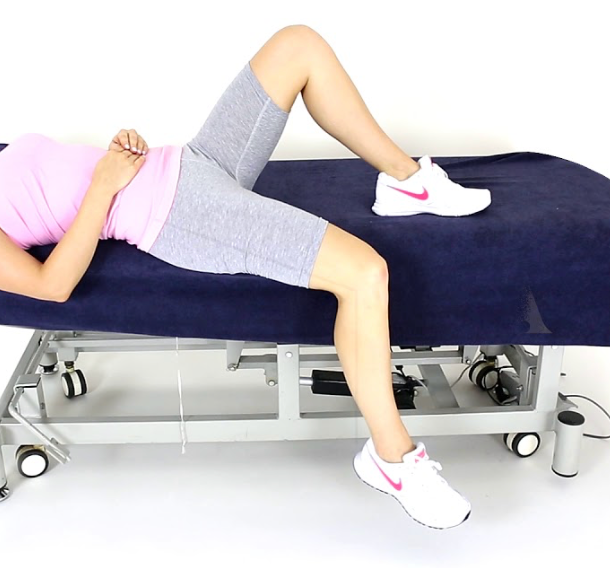Why Stretching is SO Important with PD
- Kristi Riker

- Oct 4
- 3 min read
Written By: Kristi Riker OTD, OTR/L
PD is characterized by an abnormally flexed posture. Flexion is another term for the bending of a joint that decreases the angle between two body parts. For example, when you bring your chin down to your chest, you are flexing your neck.
With PD, the flexor muscles in several regions of the body tend to become tighter or more rigid than their opposing extensors. The neck may be pulled forward and down by the scalene and sternocleidomastoid muscles. The shoulders often round forward as the pectoralis or chest muscles tighten. The trunk may form a stooped posture due to flexion of the abdominal muscles. The lower body can also experience this effect in the hips, knees, and ankles.
This flexion pattern pulls one’s center of gravity forward, increasing the chance of falls. It can reduce arm swing and create smaller steps when walking. It may lead to chest compression and shallower breathing. Daily tasks such as reaching overhead, standing up straight, or walking longer distances may get more difficult.
How Does Stretching Help?
Stretching acts on the muscle-tendon unit through controlled elongation of soft tissues to reduce the rigidity or stiffness of the muscles.This helps reduce the shortening of the flexor muscles, resulting in enhanced muscle flexibility and joint mobility. This improved flexibility provides benefits to overall mobility, gait and balance. (Duñabeitia 2025)
Overall, consistent stretching is likely to improve your:
Posture
Breathing
Balance
Gait
Overall mobility
Overhead reaching
Transfers (sitting/standing)
Daily comfort and pain
Blood circulation/healing
Body awareness
Stretching at Home:
Now that we know WHY stretching matters so much, let’s talk about some of the best stretches you can do on a daily basis.
Assisted stretches: when a caregiver, therapist, or partner helps move the body into a stretch.
This is extremely helpful with PD related rigidity as reduced mobility makes independent stretching difficult.
Safety tips for assisted stretches:
Consult with a therapist or coach for guidance on these stretches before completing them independently
Go SLOW (rigidity responds poorly to fast or jerky movements)
Watch for cues of discomfort (grimacing, resisting)
Never force the range of a joint
Hold each stretch for about 30 seconds for 5 sets as tolerated
Assisted Stretches:
Chest/Shoulders (Pectoralis)
Setup: Person being stretched lies on back on a firm surface w/ arms out to side.
Assist: Partner gently presses shoulders toward the floor according to comfort level.
Benefit: Opens chest, reduces rounded shoulders, improves posture and breathing.

Neck Flexors (Scalenes)
Setup: Person being stretched sits up tall.
Assist: Partner uses one hand to press down gently on shoulder, then uses other hand to gently guide head laterally (ear to shoulder); complete on both sides.
Benefit: Counters forward-head posture, improves ability to look up.

Neck Flexors (Sternocleidomastoid)
Setup: Person being stretched sits up tall.
Assist: Partner uses one hand to press down gently on shoulder, then uses other hand to gently guide head backwards and slightly to the side; complete on both sides.
Benefit: Counters forward-head posture, improves ability to look up.

Hip Flexor (Psoas)
Setup: Person being stretched lies on side.
Assist: Partner places one hand on hip and wraps other hand under knee to gently pull leg backwards into hip extension.
Benefit: Lengthens hip flexors, improves step length and upright walking.

MODIFIED Hip Flexor Stretch (Psoas)
Setup: Person being stretched lies on back and lets leg hang off edge of bed or table.
Assist: Partner gently presses down on hanging leg (can increase stretch by pressing opposite leg into flexion as seen in the picture below and to the right).
Benefit: Lengthens hip flexors, improves step length and upright walking.


Hamstring Stretch
Setup: Person being stretched lies on back.
Assist: Partner supports one leg and slowly lifts it upward, keeping the knee straight, until stretch is felt behind the thigh. *PLEASE DO NOT FORCE THE LEG TO GO BEYOND 90 degrees! Additionally, the leg may not completely straighten.
Benefit: Improves knee extension, improves walking and standing up

Calf Stretch
Setup: Person being stretched lies on back or sits with leg extended
Assist: Partner supports the heel and uses their forearm to gently push the ball of the foot upward towards the body
Benefit: Improves ankle flexibility, reduces shuffling and helps with balance.

Resources
Duñabeitia I, González-Devesa D, Blanco-Martínez N, Ayán-Pérez C. The effects of stretching in Parkinson's disease: A systematic review of randomized controlled trials. Parkinsonism Relat Disord. 2025 May;134:107796. Doi: 10.1016/j.parkreldis.2025.107796. Epub 2025 Mar 19. Erratum in: Parkinsonism Relat Disord. 2025 Jul;136:107865. doi: 10.1016/j.parkreldis.2025.107865. PMID: 40122719.




Comments